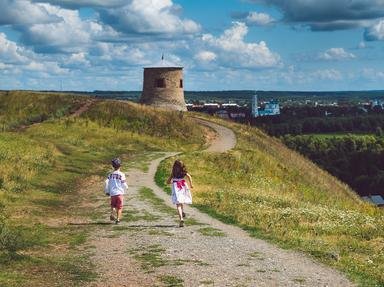Quiz Answer Key and Fun Facts
1. At the start of every day, when it was time to cook breakfast, how did grandma usually achieve this without any electricity?
2. After grandma had finished the washing up from breakfast, it was time to do the laundry perhaps. But wait, no electric washing machines! How, then, was the household laundry done?
3. Time for a cup of tea for grandma. She made that by keeping a kettle on the boil on the stove, so that instant hot water was always available. How did she keep her "refrigerator" going to store the fresh milk?
4. After lunch, it was time to do the ironing for an hour or so. Oh, but how - with no electricity?
5. In the cool of the evening before it was time to cook dinner, grandma liked to relax and listen to her favourite records being played. But - but how, you ask with a frown on your face, how did this work without being plugged into electricity?
6. Afternoon tea on the farm was like a small banquet, but sometimes I just wanted toast and jam instead. Oh sure, you say, toast with no electricity to power a toaster. How was toast made back then?
7. How did we as children entertain ourselves without the benefit of electrically powered Xboxes, Playstations, Nintendo Wii and similar powered games back then?
8. As the sun began to set each day, how was the house lit without electricity?
9. You wonder how hot water was provided for our baths I imagine, without the benefit of electricity to do the job for us. How was this achieved?
10. Yawns, and time for bed at last. Lovely comfortable old beds covered with home-made eiderdowns. How did we keep warm in winter with no electric blankets?
Source: Author
Creedy
This quiz was reviewed by FunTrivia editor
NatalieW before going online.
Any errors found in FunTrivia content are routinely corrected through our feedback system.

